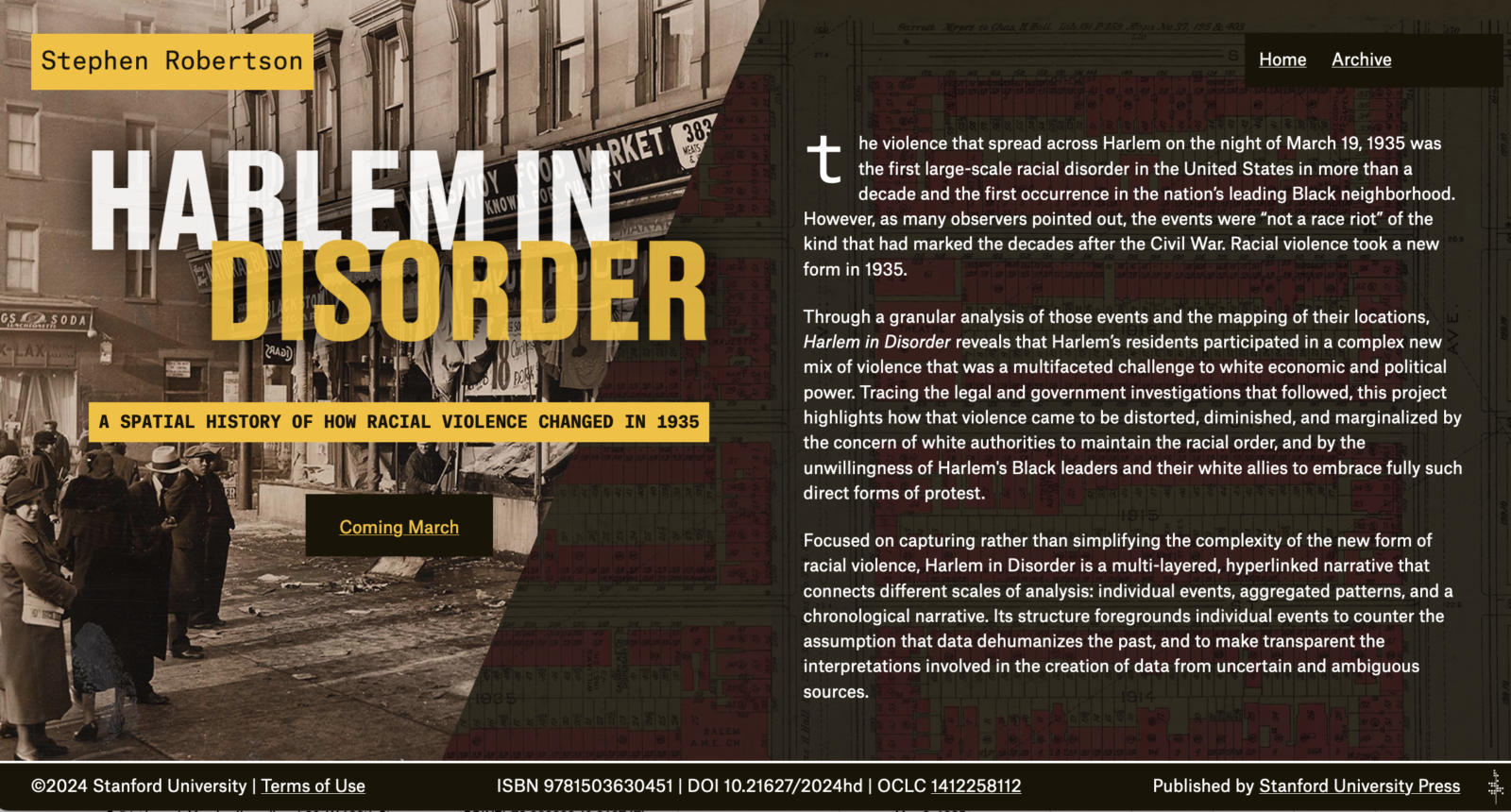The digital monograph Harlem in Disorder: A Spatial History of How Racial Violence Change in 1935, was published by Stanford…
By 1930, there were more than 24,000 school-age black children in Harlem (1). Five public elementary served the black community…
When blacks moved to Harlem to live, they also looked to relocate and establish businesses. While the number of Harlem’s…
Stephen Robertson’s article, “Constrained but not contained: Patterns of everyday life and the limits of segregation in 1920s Harlem,” has…
While most employed adults travelled outside Harlem to work six days a week, children remained in the neighborhood. An Urban…
Cross-posted from drstephenrobertson.com On March 19, 2016, I participated in the Working Group on Interpreting the History of Race Riots…
The February 2016 issue of the American Historical Review includes an extended review of Digital Harlem — “Harlem Crime, Soapbox Speeches, and Beauty…
Our article, “Harlem in Black and White: Mapping Race and Place in the 1920s,” has now appeared in the Journal…
Aggregated census data have been important in establishing the character of Harlem as a black neighbourhood. Census schedules individualize that…
One of the purposes of this blog is to raise awareness of Digital Harlem and draw visitors to the site.…




